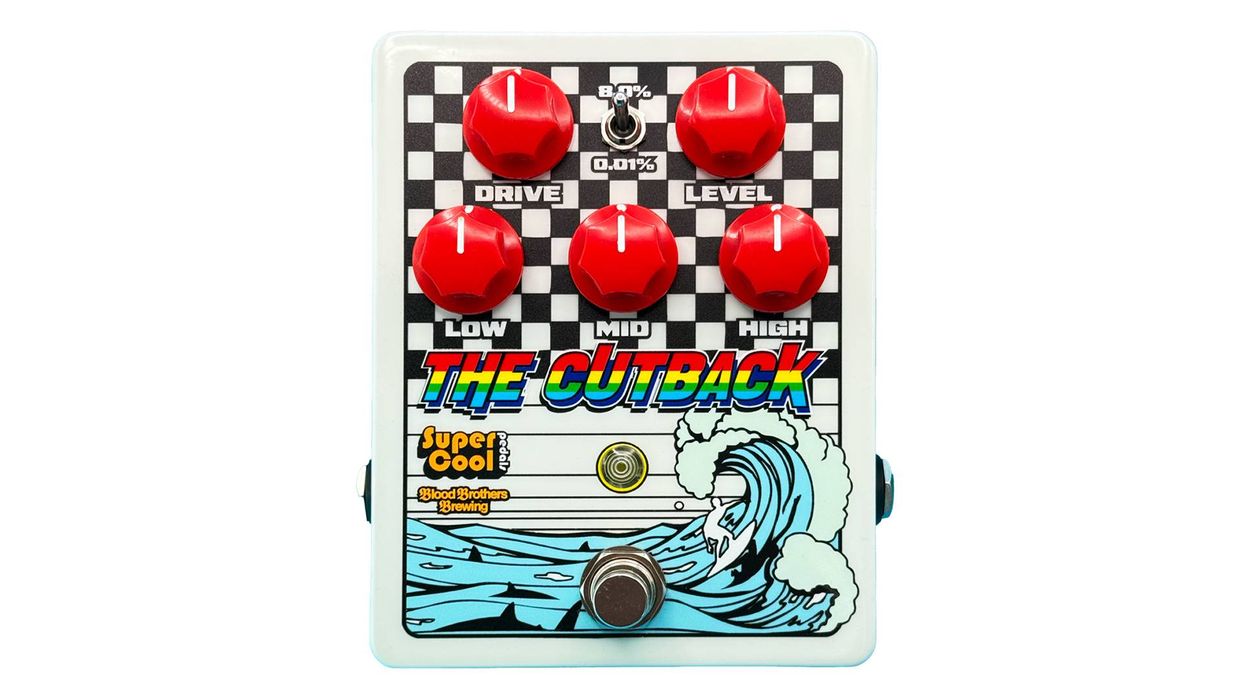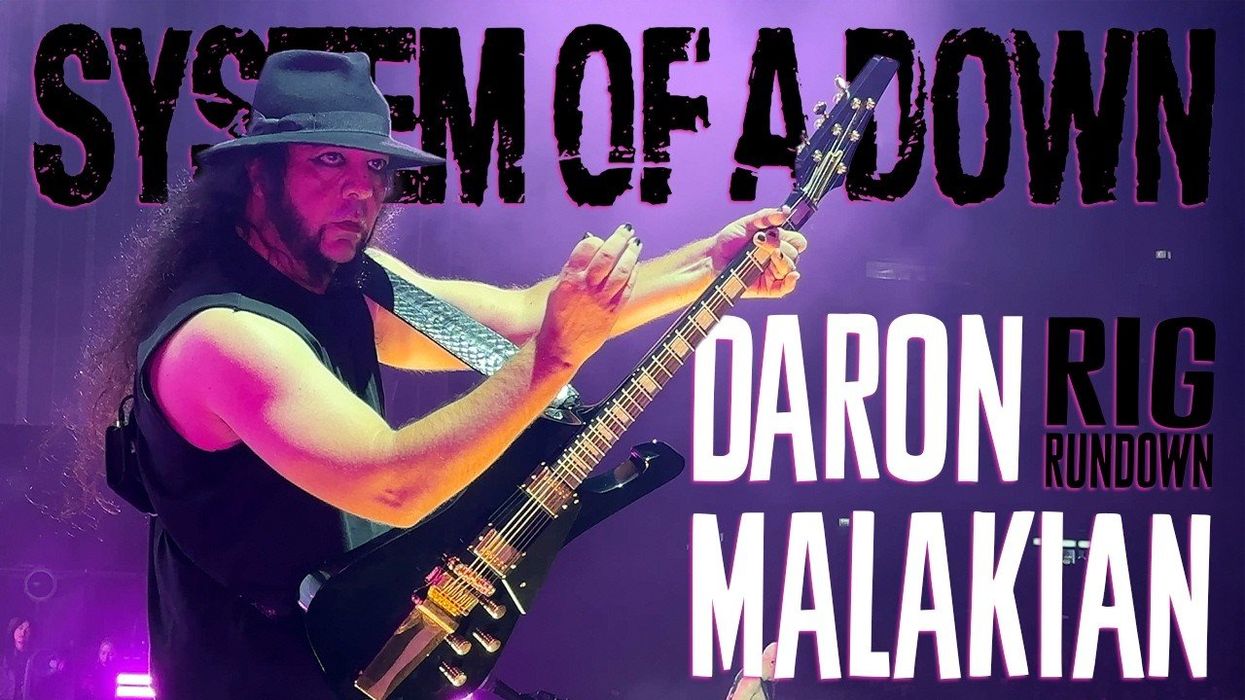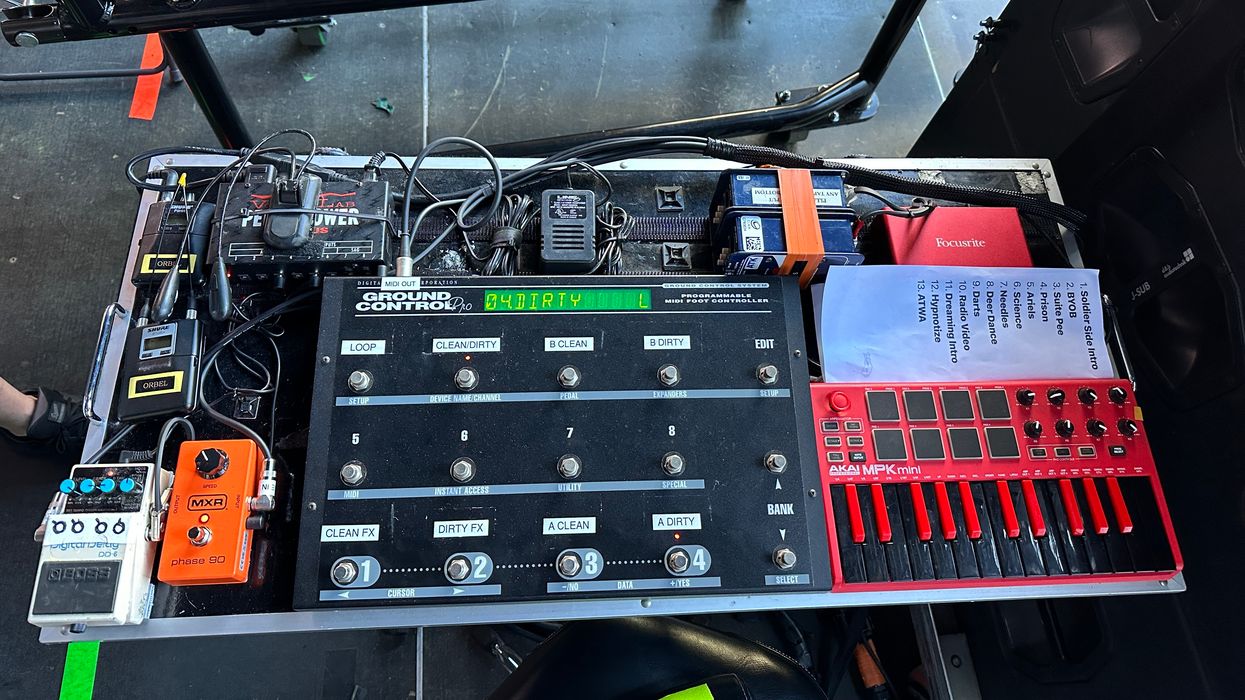An aviary of 6-strings, a floor-based amp system, and an entire zoo full of pedals create this axeman’s vast sonic vocabulary—all seen in his second PG Rig Rundown.
It’s all about the yin and yang … and the heavy guitar tones when Scott Holiday of Rival Sons plugs in and rocks out onstage. This year, the band has got something special cooking: a pair of albums, the just-released Darkfighter and the upcoming Lightbringer, speaking of yin and yang.
On the current Darkfighter tour, Rival Sons recently stopped at Nashville’s Marathon Music Works and invited PG onboard their stage for a tour of Scott’s gear. He’s made some changes since his 2017 Rig Rundown. He’s still a Firebird devotee, and that epic moustache is untouchable. But there are plenty of 6-string additions and some big changes in the amp department. Check it out!
Brought to you by D’Addario AutoLock.
Original Recipe
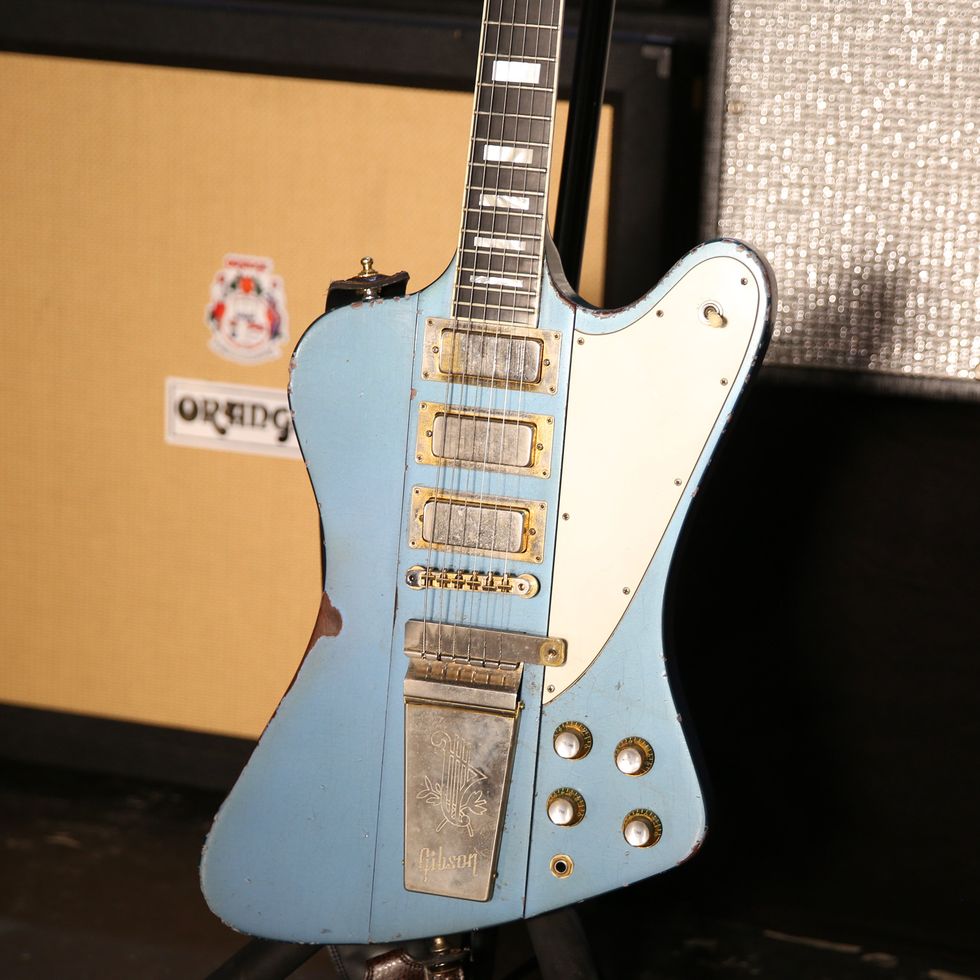
This 1999 Gibson Custom Firebird VII, aka “Bluebird,” is Scott Holiday’s first avian. He uses a custom set of Dunlop strings—typically .011–.050.
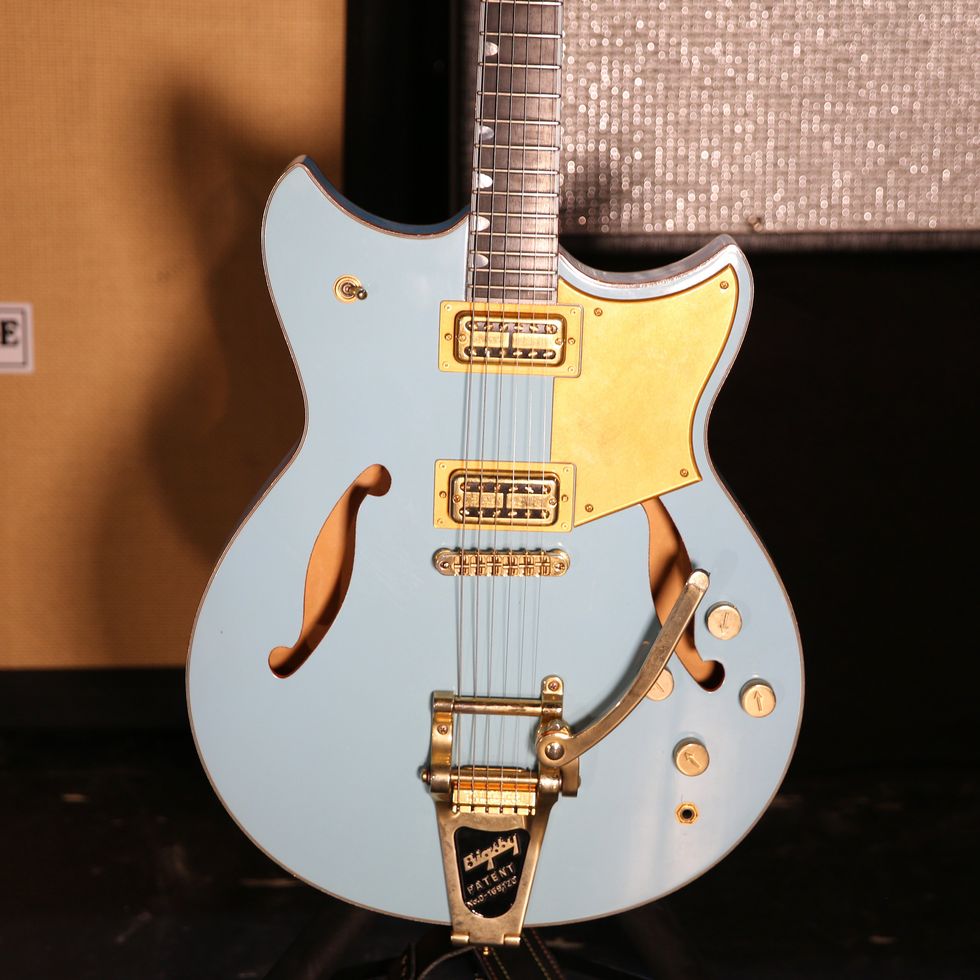
This custom-built Yamaha is tuned to C#-F#-C# F#-A#-C#—essentially, a variation on open C sharp.
Double the Fun...
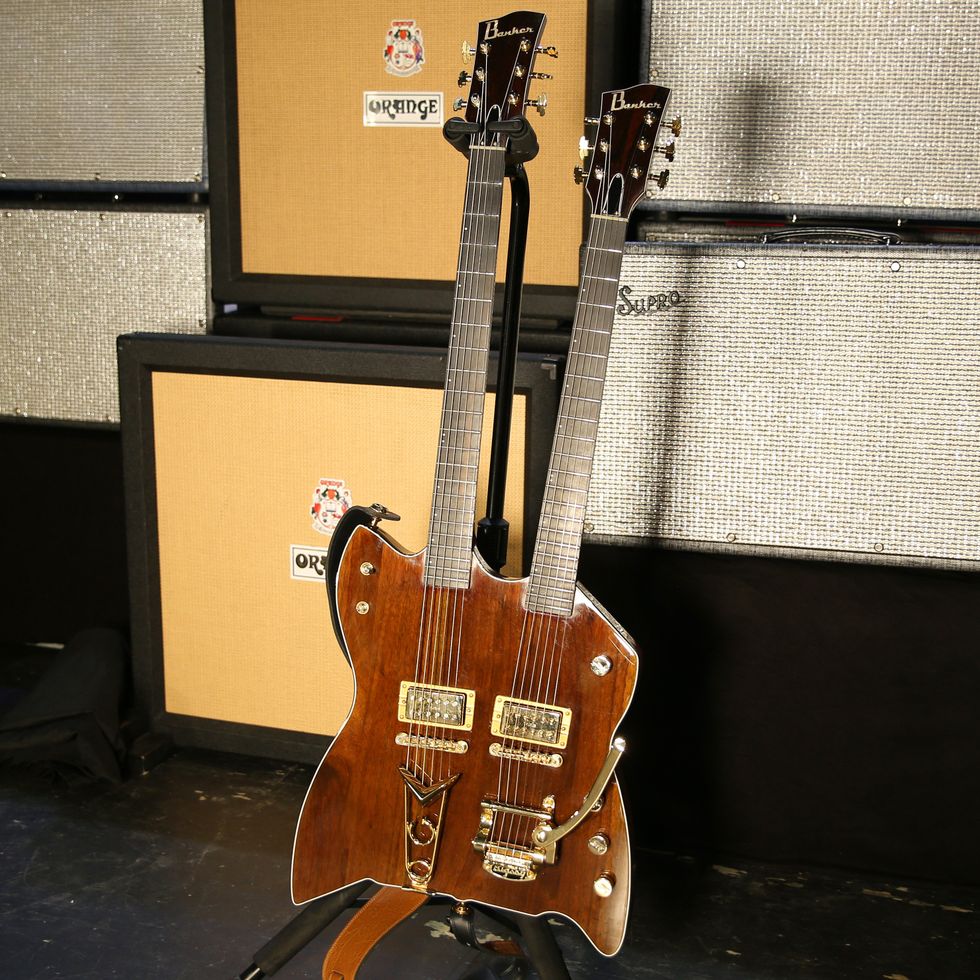
He also has a few specially made doublenecks, including a Banker Custom that gives Holiday a baritone tuned A to A and a second standard-tuned neck.
And Double to Love!
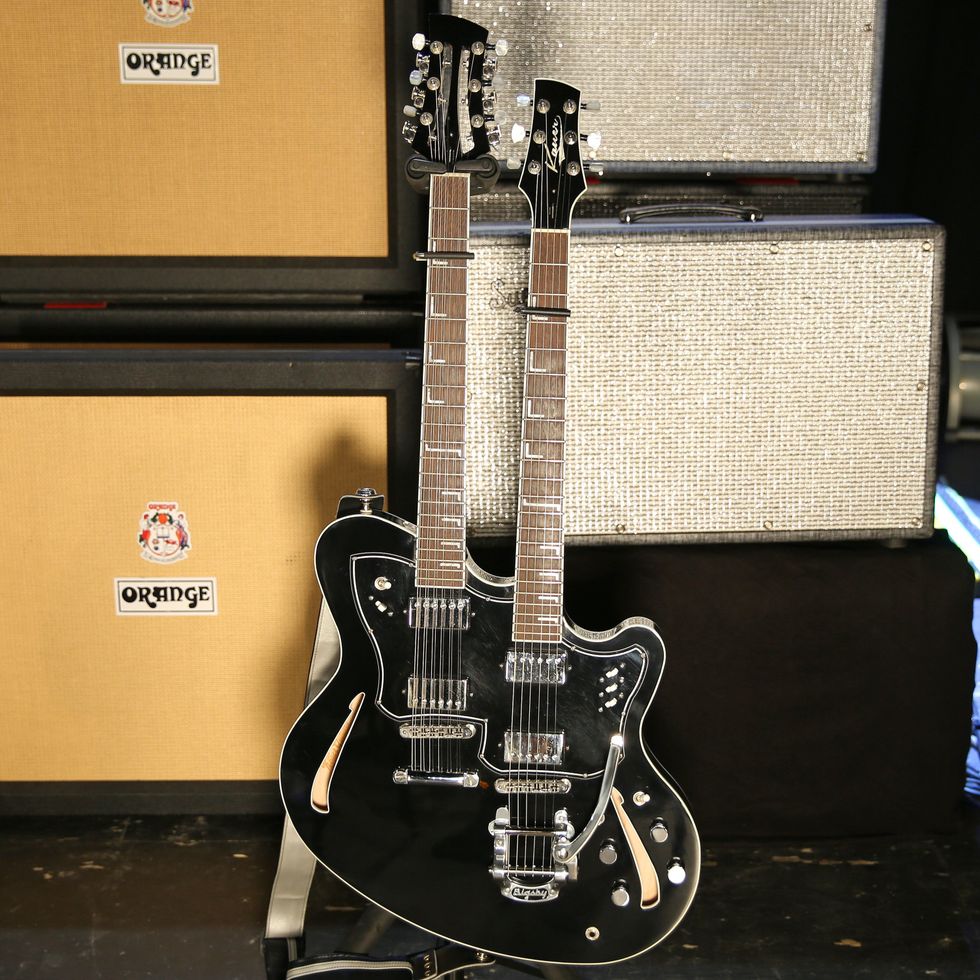
Plus this semi-hollow Kauer Super Chief doubleneck that gives him a 12-string/6-string combination. Surprise! Both necks are tuned to DADGAD.
King of Birds
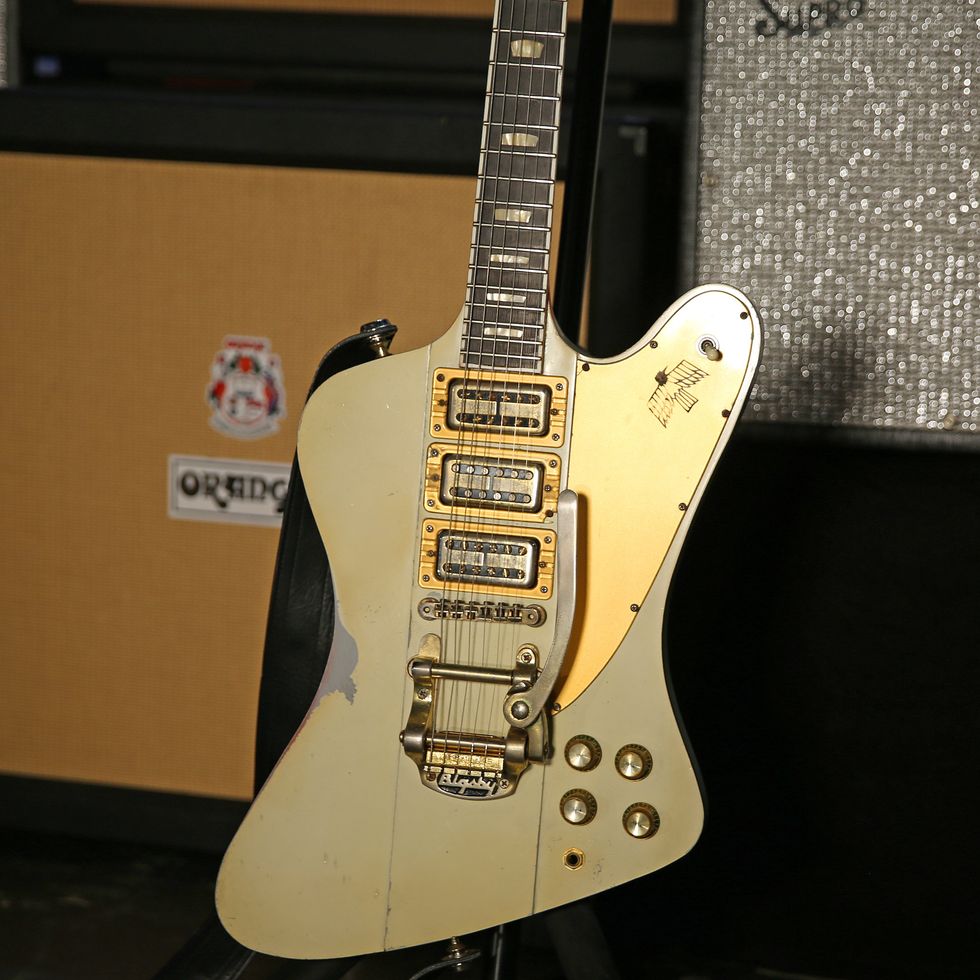
Holiday calls this ’Bird-inspired Kauer his “Excalibur,” for its comfort, dependability, and big, dominating tone.
More Hot Wings, Please
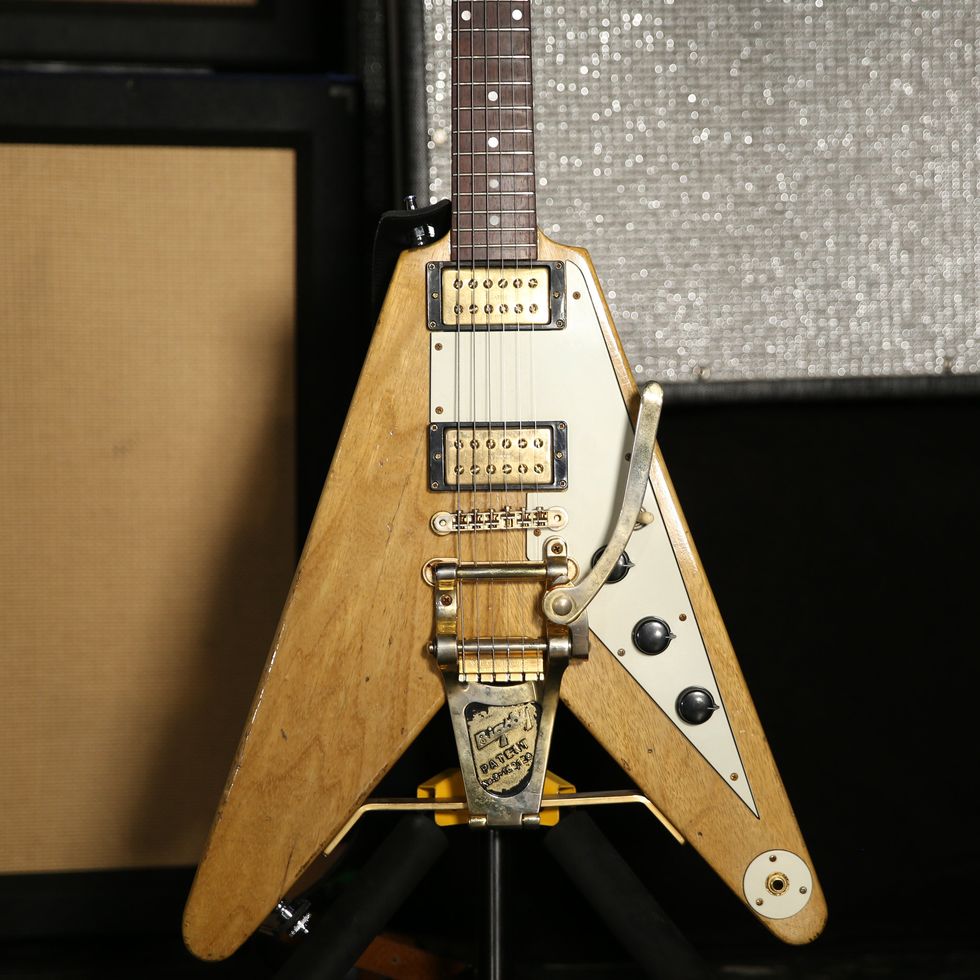
This Banker Custom Flying V features a Bigsby, at the risk of writing the obvious, and it stays in standard tuning. Thank you, Lonnie Mack!
Ice Bird
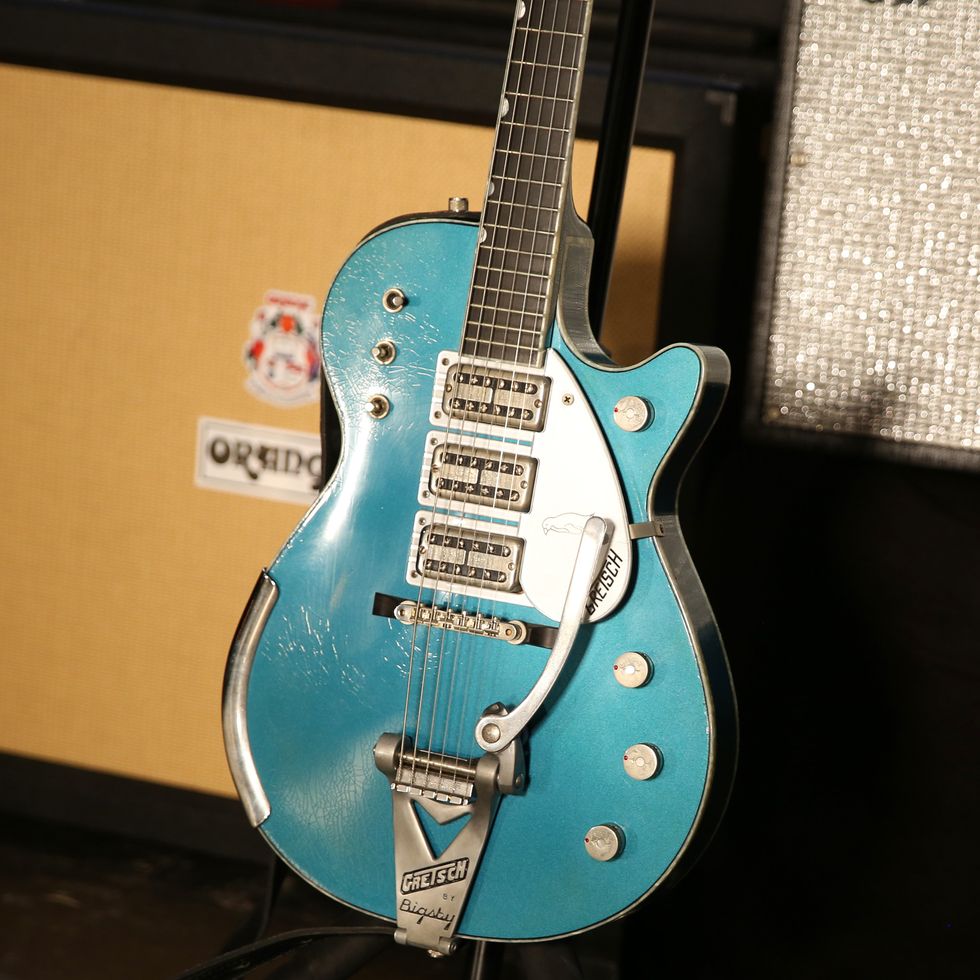
This custom-built Gretsch Penguin lives in D-standard tuning and has Gretsch’s own flair on the classic whammy formula.
Peacocking
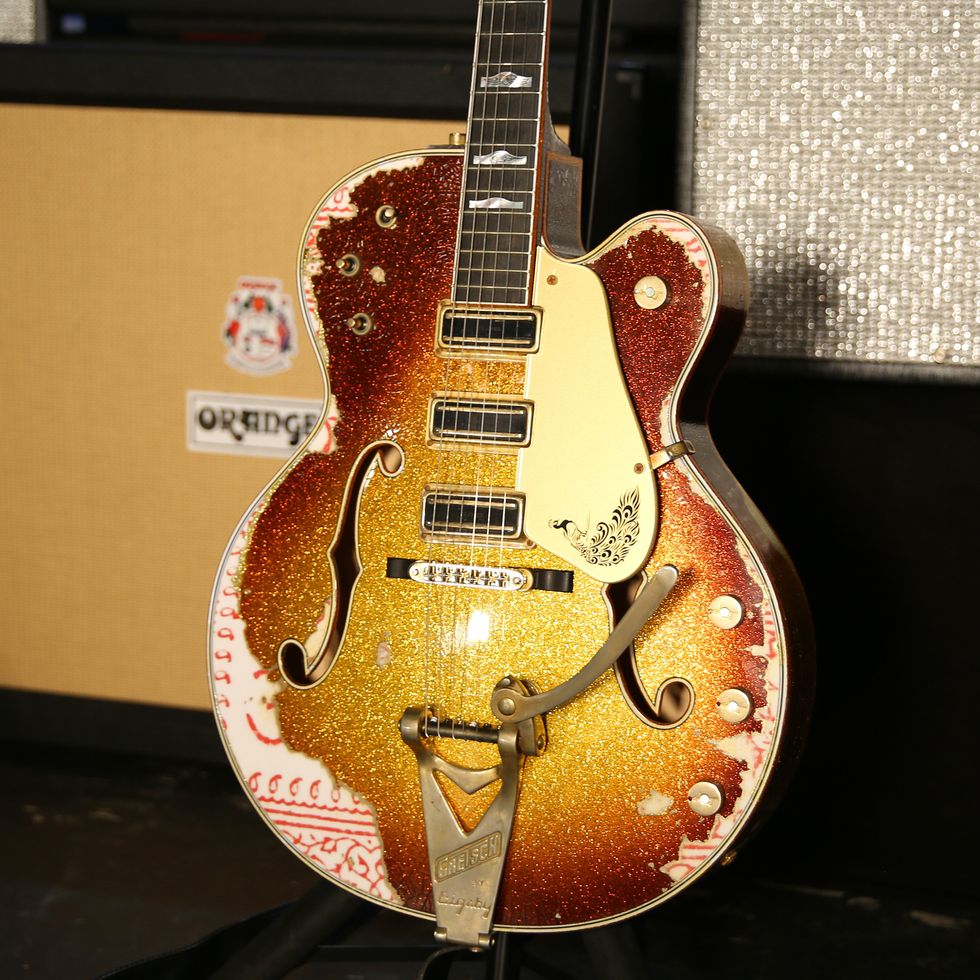
This custom Gretsch Falcon lives in Standard tuning. (Notice the unusual bird adorning the pickguard per Holiday's request in keeping with Gretsch's fowl flags on their instruments.)
Offset Flier

This 1962 Fender Jazzmaster is tuned C#-F#-C#-F#-A#-C# and was Holiday's first major vintage-guitar purchase.
Spiral Flier
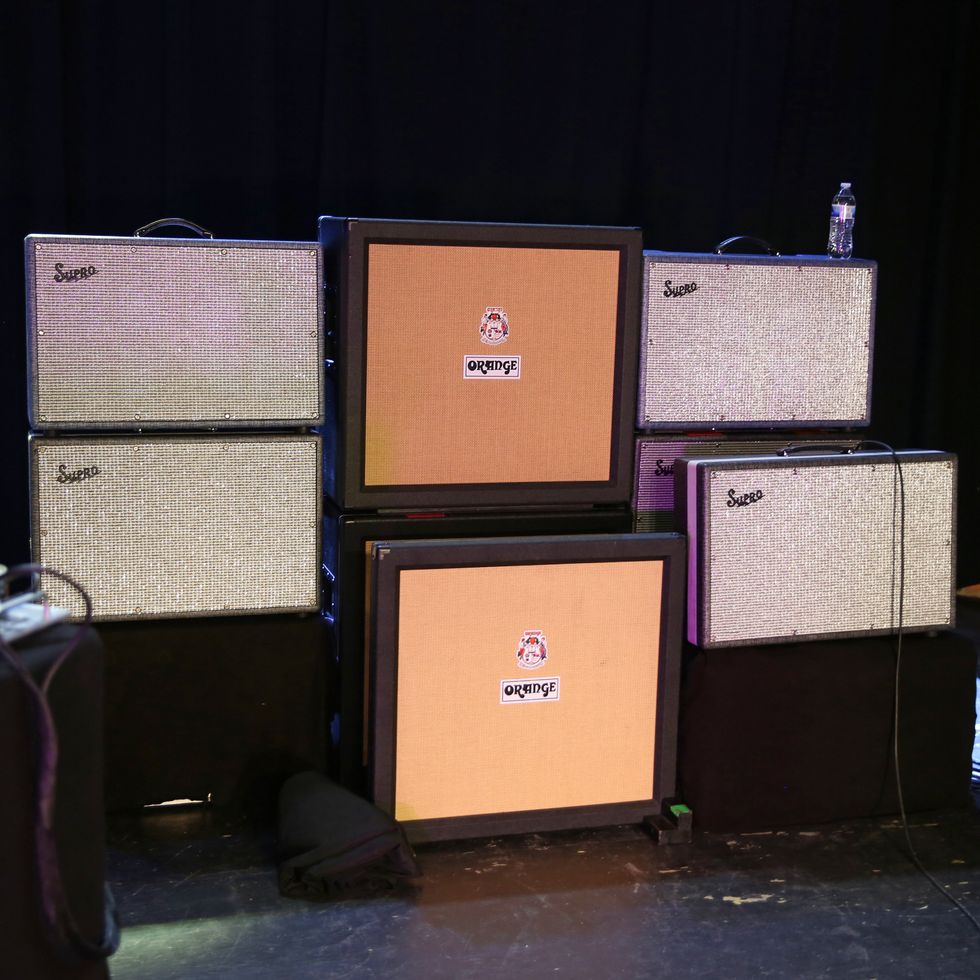
Holiday crunches like a tube amp player, but what you are hearing is a Line 6 Helix into a Seymour Duncan PowerStage pedal amplifier, which drives an Orange 4x12 and a Supro 2x12. But it also has a lot of effects going into it. Read on!
Scott Holiday's Amps and Effects

Here’s the break-down of Scott Holiday’s multiple-board system. At right, there’s a Custom Audio Electronics Wah, ZVEX Fuzz Probe, a Way Huge Attack Vector, and a Custom Audio Electronics Line Driver, plus a juiced-up kitty cat delivering the power. The middle board holds the Line 6 Helix, with four Dunlop expression pedals. And the final board is a Custom Audio Electronics RS-T MIDI Foot Controller that is used to patch in effects from offstage boards that contain an Electro-Harmonix Micro Synth, a Way Huge Atreides Analog Weirding Module, a Deep Trip Hellbender, a kossekFX Kraken multi-octave fuzz, a Victory Kraken Preamp, a Keeley Synth 1, an Isle of Tone fuzz, two Vox Time Machines, an Electro-Harmonix POG, a Way Huge Ring Worm, a Sweet Sound Mojo Vibe, a Strymon Mobius, a Line 6 DL4, and a Caroline Guitar Company Météore Lo-Fi Reverb.
![Rig Rundown: Rival Sons' Scott Holiday [2023]](https://www.premierguitar.com/media-library/rig-rundown-rival-sons-scott-holiday-2023.jpg?id=33810150&width=1200&height=675)



![Devon Eisenbarger [Katy Perry] Rig Rundown](https://www.premierguitar.com/media-library/youtube.jpg?id=61774583&width=1245&height=700&quality=70&coordinates=0%2C0%2C0%2C0)

















